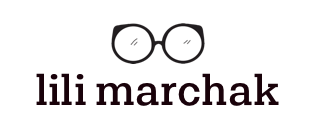A quick overview
the problem
“Who is our customer?”
It’s a harder question to answer than you’d think and at the top of my mind as I hunted through previous research executed by the design team. We had some outdated personas and customer journey maps mostly built off of internally-generated exercises. While those were certainly better than nothing, I have personally mixed feelings about personas built off of assumptions and demographic data. (Would love to talk more about my persona feelings, if interested). Essentially, I wanted to pursue a more complete picture and develop a tool that defined our customer’s behavioral landscape.
Methodology & Process
Pursuing and scoping this project was difficult: “who is our customer?” is a great starting point, but an admittedly terrible objective. After a few assumptive exercises, I attempted to boil it down to this:
- establish major behaviors, needs, goals, and frustrations for different types of travelers
- understand what people do before, during, and after a trip
Upon reflecting on this project here and now, I should have continued to scope down this problem area into multiple studies over a span of time (perhaps focusing on behavior before, during, and after booking). However, I had limited time and budget, so interviews were the most ideal and flexible tool to use with the time/money allotted to this pet project. At this point, some data was better than no data.
I recruited ~30 participants across the country for 60 minute interviews based on generalized travel data. The majority of participants were recruited from Priceline’s internal database, but I reached out to non-Priceline customers as well to understand if travel behaviors changed between competitors.
With a slew of product managers and designers, we worked together to piece together major patterns through affinity map sessions. This helped allow PMs to feel ownership of the material we collected and invested in illustrating how research is conducted.
Results
Based on the data we collected, it became very clear that not everyone travels the same way. This was to be expected, but worked against our previous one-user-fits-all mentality. We spoke to a wide range of customers from different backgrounds, travel experience, and demographics for roughly 60 minutes; despite their superficial differences, several patterns began to emerge. We were able to group our customers into 5 main archetypes that include: Last-Minute, Group, Savvy, Price-Conscious, and Experiential travelers.
As we built this tool, we discovered very quickly that our customers may not fit cleanly in each archetype. Depending on the type of trip, a customer can evolve and belong to multiple archetypes at once or completely change their archetype on their next trip. Say my pipes burst at home and I needed a last-minute hotel; that’s a completely different type of booking experience from, say, me planning my first trip to Tokyo. Despite this, the behaviors, needs, goals, feelings, and intentions associated with each archetype are applicable. It’s up to the online booking platform to conform and recognize these behaviors to better cater experiences for our different traveler types.
Regarding the toolkit itself, each archetype is described by certain behaviors, frustrations, and have an additional empathy map to describe what that type of user is saying, doing, or feeling in the moment. We also built a guide to instruct people how to use the tool; it’s meant to act as a lens to customer targeting and design jam/ideation sessions.
Impact
Personas—and, by extension, behavioral archetypes—need buy-in for widespread use and that’s a huge reason why they fail. When I built and pursued these archetypes, admittedly I lacked the ability to get them immediately off the ground. They were confused between marketing and the more typically-generated personas, so I began a mini education campaign regarding the tool I developed.
The campaign helped, but I still continue to vouch for behavioral archetypes when/where I can. Slowly but surely, they’re being adopted for use. We’ve spread the insights from that research to specific teams and are now using them to help define customer targeting for future research.
